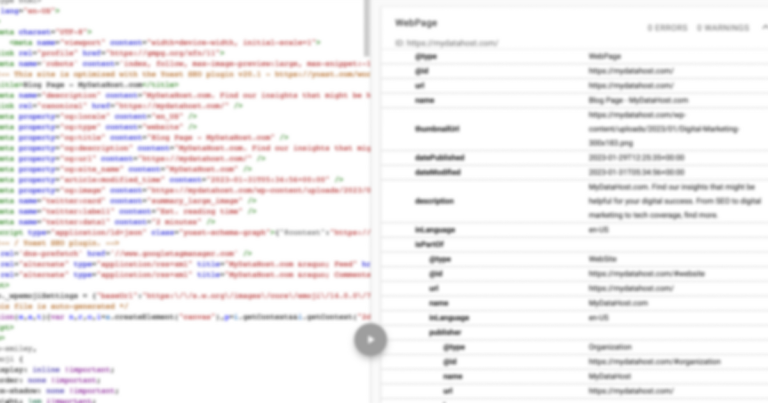Master the art of on-page SEO with our comprehensive checklist for beginners. Learn how to optimize your website's keywords, content, meta tags, URLs, images, and more. Improve your search engine rankings and attract organic traffic with this step-by-step guide. Enhance user experience, monitor performance, and stay ahead in the ever-changing SEO landscape. Start optimizing your website today!
Introduction
In today’s digital landscape, having a well-optimized website is crucial for attracting organic traffic and improving search engine rankings. On-page SEO plays a vital role in ensuring that your web pages are optimized to meet search engine requirements. For beginners, navigating the intricacies of on-page SEO can be overwhelming. However, with the right checklist and guidance, you can optimize your website effectively. This article provides a comprehensive on-page SEO checklist for beginners, covering essential elements to focus on to enhance your website’s visibility and performance in search engine results pages (SERPs).
1. Keyword Research and Optimization
One of the fundamental aspects of on-page SEO is keyword research. Begin by identifying relevant keywords and phrases that align with your content and target audience’s search queries. Tools like Google Keyword Planner, SEMrush, or Moz’s Keyword Explorer can assist you in finding valuable keywords.
Once you’ve identified your target keywords, optimize your web pages by incorporating them strategically in the following areas:
- Page title: Include your primary keyword near the beginning of the title tag.
- Meta description: Write a compelling and concise description that includes your primary keyword.
- Heading tags: Use H1, H2, and H3 tags to structure your content, placing relevant keywords within them.
- URL structure: Create clean and keyword-rich URLs that accurately represent your content.
- Body content: Naturally integrate keywords into your content, maintaining readability and avoiding keyword stuffing.
2. Content Optimization
High-quality, relevant, and engaging content is essential for on-page SEO. Optimize your content using the following guidelines:
- Length and readability: Aim for comprehensive, well-structured content that provides value to your readers. Use clear headings, paragraphs, bullet points, and concise sentences.
- Unique and original content: Avoid duplicating content from other sources. Search engines favor unique content that offers fresh insights.
- Keyword density: Maintain a natural keyword density by incorporating keywords naturally within the content. Overusing keywords may lead to keyword stuffing penalties.
- Internal linking: Incorporate internal links to relevant pages within your website. This helps search engines understand your site’s structure and improves user navigation.
3. Meta Tags and Structured Data
Optimizing meta tags and structured data provides additional context to search engines, enhancing your website’s visibility in SERPs:
- Meta title: Create unique and compelling titles that accurately describe your content, including relevant keywords.
- Meta description: Craft informative and enticing descriptions that encourage users to click on your link in search results.
- Schema markup: Implement structured data using schema markup to provide additional information about your content, such as ratings, reviews, and event details. This helps search engines understand your website better.
4. URL Optimization
A clean and optimized URL structure improves user experience and search engine visibility. Consider the following tips:
- Use descriptive and keyword-rich URLs that reflect the content of your page.
- Avoid excessive use of numbers, symbols, and special characters.
- Separate words with hyphens (-) rather than underscores (_) to enhance readability.
5. Image Optimization
Images can significantly impact website performance and user experience. Optimize images using the following techniques:
- File size and format: Compress images to reduce file size without sacrificing quality. Use appropriate image formats, such as JPEG for photographs and PNG for graphics.
- Alt tags: Include descriptive and keyword-rich alt tags that accurately describe the image. This improves accessibility and helps search engines understand the content.
6. Mobile-Friendly Design
With the increasing use of mobile devices, having a mobile-friendly website is crucial for both user experience and search engine rankings. Ensure your website is mobile-friendly by implementing the following practices:
- Responsive design: Use a responsive website design that adjusts and adapts to different screen sizes and devices.
- Mobile usability: Optimize the layout, font size, and touch elements to ensure easy navigation and readability on mobile devices.
- Page speed: Improve your website’s loading speed by minimizing file sizes, leveraging browser caching, and optimizing code. Mobile users expect fast-loading pages.
- Mobile compatibility test: Use tools like Google’s Mobile-Friendly Test to evaluate your website’s mobile compatibility and identify any issues that need to be addressed.
7. User Experience and User Engagement
Search engines prioritize websites that provide a positive user experience. Enhance user engagement and satisfaction by implementing the following strategies:
- Easy navigation: Ensure your website has a clear and intuitive navigation menu, allowing users to find information easily.
- Readability: Use legible fonts, appropriate font sizes, and ample spacing to enhance readability.
- Multimedia elements: Incorporate videos, images, and infographics to make your content more engaging and visually appealing.
- Call-to-action (CTA): Include clear and compelling CTAs that guide users to take desired actions, such as signing up for a newsletter or making a purchase.
- Social sharing buttons: Make it easy for visitors to share your content on social media platforms by including social sharing buttons.
8. Monitoring and Analytics
Regularly monitor and analyze your website’s performance using tools like Google Analytics. Pay attention to metrics such as organic traffic, bounce rate, time on page, and conversions. This data will provide insights into areas that need improvement and help you refine your on-page SEO strategy.
Conclusion
Mastering on-page SEO is essential for beginners to improve their website’s visibility and attract organic traffic. By following this comprehensive on page seo checklist for beginners, you can optimize your website effectively. Remember, SEO is an ongoing process, and it requires continuous monitoring, analysis, and adaptation to stay ahead in the ever-evolving digital landscape. Regularly update your content, adapt to algorithm changes, and focus on providing a remarkable user experience. With dedication and consistent efforts, you can enhance your website’s on-page SEO and achieve better rankings in search engine results.









